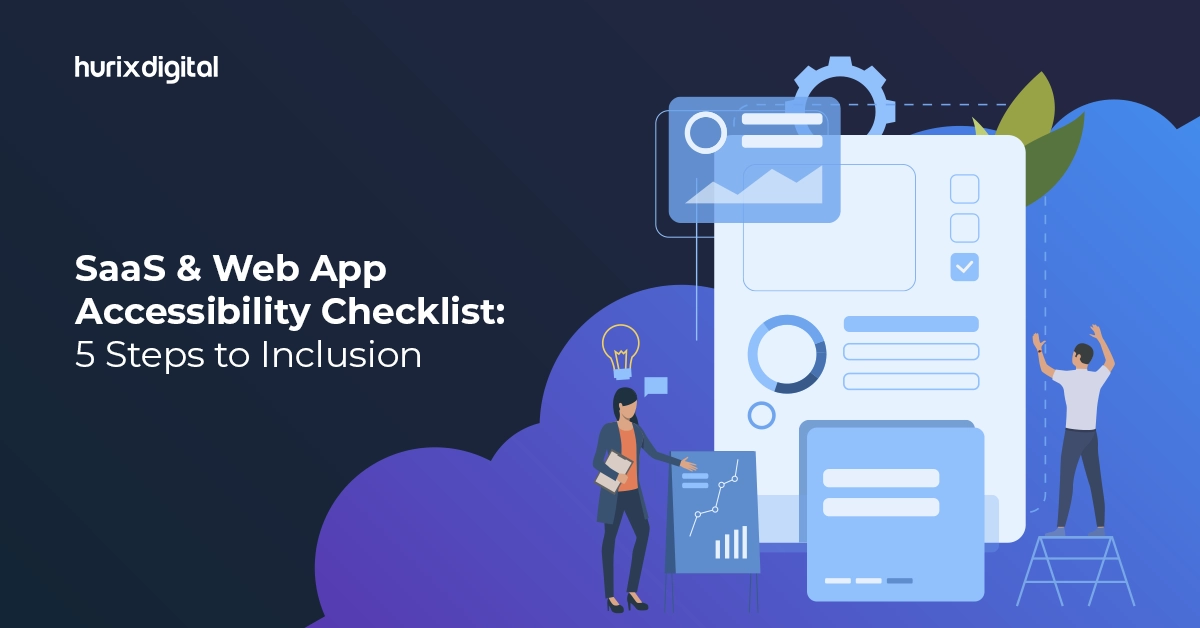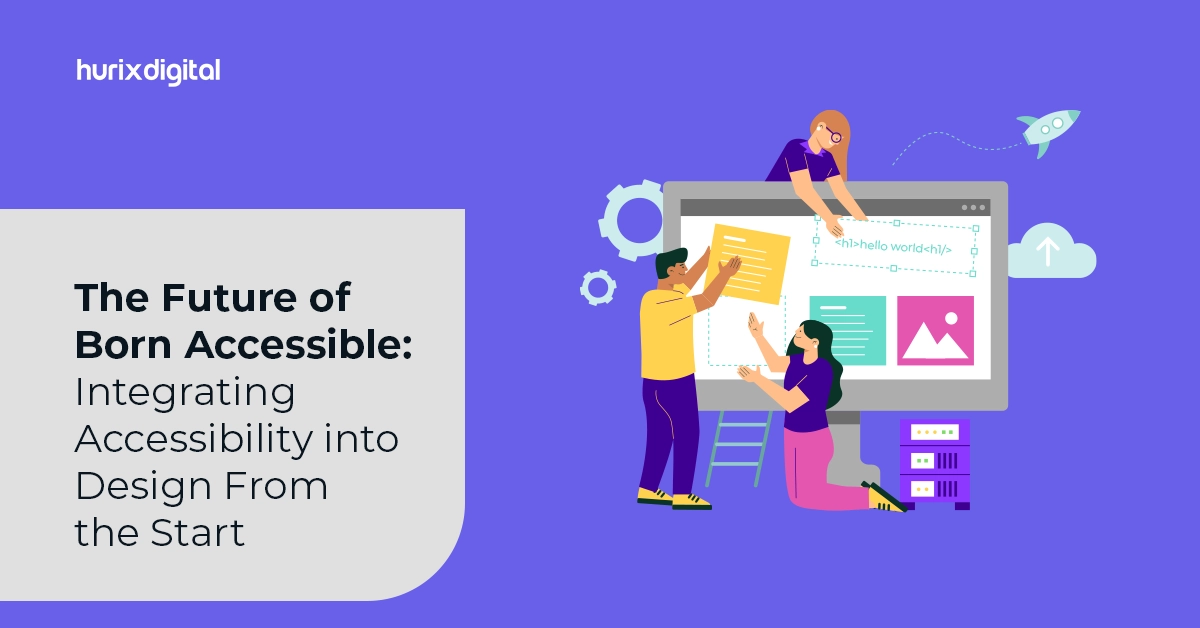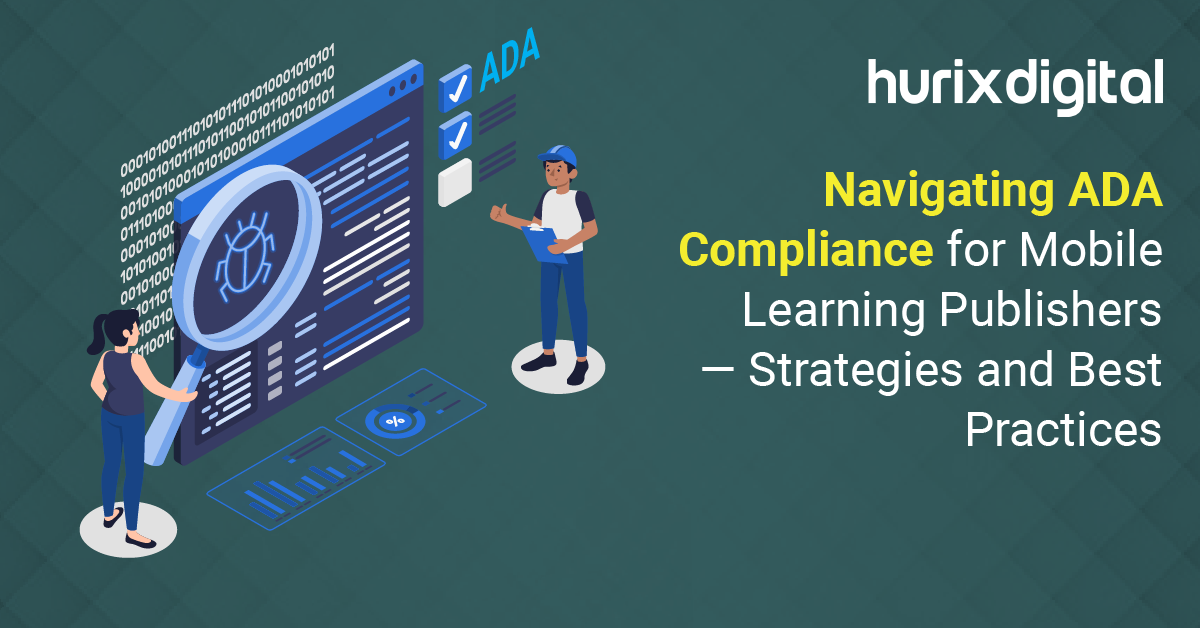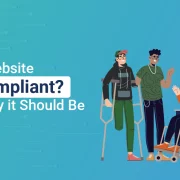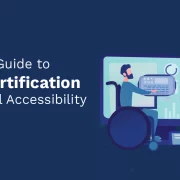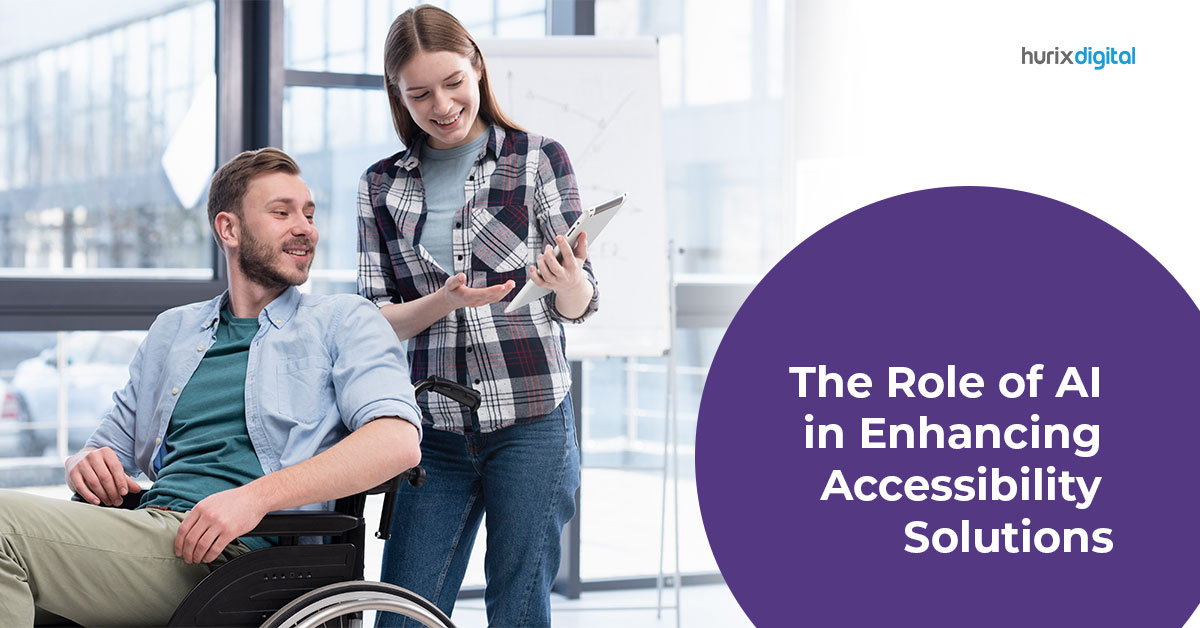
The Role of AI in Enhancing Accessibility Solutions
Summary
This blog delves into the ways artificial intelligence is improving accessibility tools, aiding individuals with disabilities in accessing information via automated testing, virtual assistants, video captioning, and image recognition technologies. Yet, hurdles persist in maximizing AI’s potential for accessibility enhancement.
Artificial Intelligence (AI) is undoubtedly the talk of the town. From the wonderful innovations in AI to the fear of it replacing human jobs altogether, there is no way we can ignore the power of AI in today’s world.
As PwC predicts, AI could contribute to about $15.7 trillion of the global economy, and over 300+ use cases are already identified and being worked upon. But while AI is making significant inroads into how we conduct business, this revolution has a positive impact.
Using machine learning algorithms and natural language processing, AI can automate complex tasks and help people with disabilities navigate digital environments more effectively. In addition, this digital accessibility solution enables them to get the specific attention and assistance they need, making it the ideal next step in enhancing accessibility solutions.
This blog will explore how AI enhances the best accessibility solutions and will revolutionize the industry to provide better access to information for all.
Table of Contents:
What are Accessibility Solutions?
Digital Accessibility refers to how we design and develop products, devices, services, and platforms to be accessible to people with disabilities. This is critical because, per a WHO Report, about 16% of the global population, or 1.3 billion people, have some form of disability.
If our technology is not built to provide easy access, it can become a significant barrier to equal access to information.
Accessibility solutions help brands make their website or app digitally inclusive and comply with web accessibility regulations and standards. Without a web accessibility solution, people with disabilities may face significant barriers in accessing education, employment, healthcare, entertainment, and other essential services.
Accessibility solutions can help people with disabilities easily navigate, use, and communicate with technology. This inclusive approach ensures that the needs of the disabled population are looked into and enables brands to gain significant business benefits. It ensures that its platform, website, or app is accessible to a wider section of the audience, promoting its brand and improving customer loyalty.
Also Read: 6 Ways Accessibility Solutions Help in Business Growth
How is AI enhancing Accessibility Solutions?
Accessibility solutions are constantly evolving as technology advances. With the emergence of artificial intelligence (AI), there is a growing opportunity to enhance accessibility solutions and improve access for all. AI has the potential to automate complex tasks, improve accuracy, and provide personalized assistance.
Some of the ways in which it is enhancing accessibility solutions are:
1. Automated Testing & Scanning
It may not necessarily be the case that businesses don’t want to implement the required processes. The key reason is that most companies are unaware of the issues that people with disability face performing simple tasks without proper tools.
With automated AI scanners, web accessibility solutions can efficiently perform multiple accessibilities and WCAG tests to inform website owners about issues with their pages. The automated checker can also quickly learn about site navigation and ensure it complies with accessibility regulations. This doesn’t just help make the website accessible for all but also improves usability and experience.
2. Improved Virtual Assistance
AI-powered virtual assistants like Siri, Alexa, and Google Assistant already provide excellent features for people with disabilities. For example, they can set reminders, make phone calls, send text messages, read-aloud content, and perform other tasks that may be difficult for people with certain disabilities.
With machine learning and AI algorithms, these assistants can be used to personalize accessibility solutions for individual users. For example, AI-powered software can learn the preferences and needs of individual users and adjust accessibility settings accordingly.
This can improve the user experience for people with disabilities and make digital technologies more accessible to a wider range of users.
3. Better Video Captioning
As per a recent study, AI is already better at lip reading than humans. This makes it ideal for adding automated video captions, enabling those with hearing deformities to access this information. In addition, AI-based speech-to-text solutions can also convert audio files into readable output. This ensures that hard-of-hearing people can access information and understand what is being said in real-time.
4. Image Recognition
While it is now mandatory for websites to provide alt-txt for their images, some may miss adding this altogether. AI-powered image recognition tools are adding greater flexibility in this area. Many new platforms and apps use this to automatically add alt-txt to images and make them more accessible to visually impaired people. This technology enables them to understand the contents of images in real-time, providing them access to information more easily.
Also Read: What are Accessibility Solutions? 9 Best Web Accessibility Solutions to Consider
Key Takeaways
The benefits of AI-powered accessibility solutions are significant. They can help people with disabilities overcome barriers and access information and services more efficiently. They can also improve the accuracy and efficiency of accessibility solutions, making them more effective for users.
So if you still have not worked on leveraging the power of these advanced technologies to make your content more accessible, now is the time to begin. You can even read in-depth about accessibility testing to understand what steps you need to take to include accessibility features on your platform or website.
However, there are also challenges and limitations to using AI in accessibility. If you need a consultation on improving your website or app’s accessibility, consider speaking with expert consultants like Hurix Digital, who can help you get started and get the proper framework for your journey.

Vice President – Digital Content Transformation. He is PMP, CSM, and CPACC certified and has 20+ years of experience in Project Management, Delivery Management, and managing the Offshore Development Centre (ODC).
